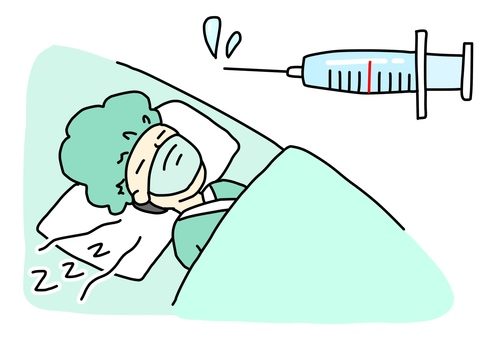Anesthesia groups often forfeit 18–30% of potential revenue due to under-coded time units, overlooked modifiers, and documentation discrepancies—issues that can significantly affect practice finances and provider income. Unlike general billing services, Anesthesia Billing Services focuses exclusively on the intricate workflows, regulations, and payer expectations that govern anesthesia claims. These specialized services provide the experience and precision necessary to enhance legitimate revenue collection and help reduce compliance concerns. Choosing the right anesthesia billing partner is more than a cost-saving move—it’s a strategy to strengthen your financial foundation.
Why Anesthesia Billing is Inherently Complex
1. Precision Time-Based Billing
-
Challenge: Anesthesia billing requires accurate time calculations, typically in 15-minute increments, from the initiation of care to post-operative handoff.
-
Nuance: Documentation must align perfectly across records. Even minor mismatches can result in underbilling or red flags during payer audits.
2. Modifier Usage in Detail
-
Challenge: Modifiers such as AA, QX, QZ, and QY specify provider types and roles. Others like P1-P6 indicate patient status.
-
Nuance: Incorrect use leads to payment denials. Each payer may interpret modifiers differently, requiring specialist-level coding knowledge.
3. Medical Direction vs. Supervision Rules
-
Challenge: CRNA billing involves strict guidelines under Medicare’s “7 Steps” rule for medical direction.
-
Nuance: Accurate documentation is crucial to determine whether the case meets criteria for direction or supervision. Missteps here can lead to revenue loss and scrutiny.
4. Base Unit & Procedure Code Complexity
-
Challenge: The ASA Relative Value Guide outlines base units per procedure. Add-on codes may apply.
-
Nuance: Understanding when to apply these codes, how to avoid bundling issues, and which payers accept certain codes requires in-depth expertise.
5. Audit Sensitivity
-
Challenge: Due to high payment volumes and billing complexity, anesthesia is often reviewed by MACs, RACs, and other auditors.
-
Nuance: Proactive compliance checks, documentation reviews, and familiarity with LCDs and NCDs can help manage audit risks.
6. Integration of Pain Management Coding
-
Challenge: Many anesthesia providers also perform pain management procedures that follow different coding protocols.
-
Nuance: Accurate use of CPT codes for services like epidurals or nerve blocks requires dual specialization.
What Specialized Anesthesia Billing Services Provide
1. Comprehensive Time Unit Validation
-
Cross-check anesthesia and surgical records
-
Convert documented time into accurate billing units
-
Identify and reconcile discrepancies
2. Advanced Modifier Assignment
-
Ensure proper use of AA, QX, QZ, QY, QK, AD, and P1-P6
-
Prevent denials caused by conflicting or incorrect modifier combinations
3. CRNA Billing & Medical Direction Compliance
-
Validate the “7 Steps” for medical direction
-
Apply correct modifiers based on level of supervision
-
Manage state-specific opt-out rules effectively
4. Base Unit & Procedure Code Accuracy
-
Use ASA guidelines to assign base units and qualifying circumstance codes
-
Understand and apply payer-specific bundling rules
5. Pain Management Coding Expertise
-
Handle coding for injections, nerve blocks, and other pain procedures
-
Avoid errors that result from mixing general and anesthesia-specific codes
6. Claim Scrubbing & Electronic Submission
-
Use tools configured specifically for anesthesia claim validation
-
Reduce rejections and speed up payment cycles
7. Payment Posting & Revenue Reconciliation
-
Accurately post split payments
-
Reconcile differences in expected vs. received payments
8. Denial Management & Appeals
-
Analyze denial reasons specific to anesthesia claims
-
Craft effective appeals backed by proper documentation
9. Compliance & Documentation Support
-
Conduct regular internal audits of anesthesia documentation
-
Stay up-to-date with payer rules and audit trends
10. Performance Reporting with Anesthesia KPIs
-
Time Unit Capture Rate
-
Modifier Accuracy Rate
-
Denial Rate by reason (e.g., time errors, direction issues)
-
Average Reimbursement per Unit
Key Benefits of Partnering with Expert Anesthesia Billing Services
-
Revenue Optimization: Recover lost revenue through more accurate time tracking, coding, and modifier usage.
-
Audit Preparedness: Reduce risk through proactive documentation audits and compliance checks.
-
Improved Cash Flow: Clean, timely submissions mean faster payments.
-
Operational Efficiency: Providers can focus on patient care rather than paperwork.
-
Advanced Reporting: Access dashboards and KPIs specific to anesthesia performance.
Choosing the Right Anesthesia Billing Partner
When selecting a billing service, consider the following criteria:
-
CANPC-Certified Coders: Credentialed experts in anesthesia and pain management billing.
-
Experience in CRNA Supervision Models: A proven track record managing complex CRNA billing workflows.
-
Technology & Integration: Platforms that integrate with AIMS and provide HIPAA-compliant, anesthesia-specific functionality.
-
Detailed Reporting: Regular updates on key metrics and transparent fee structures.
-
References from Similar Clients: Demonstrated success with other anesthesia practices.
The Future of Anesthesia Billing
Top billing services are embracing:
-
AI for Time Validation
-
Automated Modifier Conflict Checks
-
Real-time Reporting Dashboards
-
Integrated AIMS + Billing Workflows
-
Support for Tele-anesthesia Claims
Conclusion
Generic billing services often fall short when it comes to the unique demands of anesthesia practices. With time-based billing, intricate modifier rules, and high compliance risks, anesthesia groups need billing partners who specialize in their field. Anesthesia Billing Services provides the expertise, accuracy, and tools necessary to navigate these challenges and help ensure revenue stability. In an increasingly regulated and competitive environment, partnering with the right billing experts is essential for financial health and long-term growth.
Frequently Asked Questions (FAQs)
Q: Why is anesthesia billing so different from other medical billing?
A: It depends on exact time tracking, nuanced modifiers, and detailed medical direction documentation—areas where generic billers often struggle.
Q: How is anesthesia time calculated?
A: From the start of anesthesia care (pre-op) to handoff in PACU, typically billed in 15-minute units.
Q: How do you handle CRNA billing?
A: By ensuring proper documentation and compliance with Medicare’s medical direction criteria and applying appropriate modifiers.
Q: How can denials be prevented?
A: Through expert coding, scrubbers tailored to anesthesia, and detailed knowledge of payer-specific policies.
Q: What reports do you provide?
A: Anesthesia-specific KPIs such as Time Unit Capture Rate, Modifier Accuracy Rate, Denial Breakdown, and Average Reimbursement per Unit.












